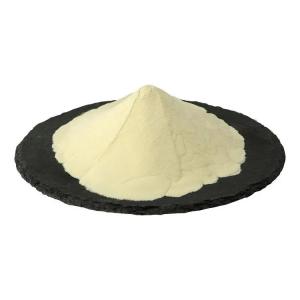Phosphatidyl serine is included in chocolate coatings.
Time:2025-07-31Phosphatidylserine (PS), a phospholipid naturally present in high concentrations in the brain, has become an increasingly popular ingredient in food formulations, especially in the confectionery industry. Its inclusion in chocolate coatings represents an exciting development, not only for its potential health benefits but also for its functional and sensory properties. This article explores the role of phosphatidylserine in chocolate coatings and its potential advantages for both manufacturers and consumers.
What is Phosphatidylserine?
Phosphatidylserine is a naturally occurring phospholipid found in the cell membranes of all living organisms, particularly abundant in the brain, heart, and other tissues. It is a vital component for maintaining cellular structure and function. In the food industry, phosphatidylserine is derived from soy or sunflower lecithin and is used primarily as an emulsifier, stabilizing fat and water mixtures.
While its primary function is that of an emulsifier, phosphatidylserine is also known for its cognitive and brain-supporting properties, which have sparked interest in its incorporation into functional foods. Studies suggest that PS may help improve memory, focus, and overall brain health, which has led to its popularity in dietary supplements and, more recently, in food products like chocolate.
Benefits of Including Phosphatidylserine in Chocolate Coatings
Improved Texture and Emulsification
One of the key reasons for including phosphatidylserine in chocolate coatings is its role as an emulsifier. Chocolate coatings often contain both fat (from cocoa butter or other oils) and sugar, which can separate over time. Phosphatidylserine helps to stabilize the mixture, preventing the separation of oil and water and ensuring a smooth, consistent texture. This enhances the mouthfeel of the chocolate coating and prolongs its shelf life by reducing the chances of fat bloom, a common issue in chocolate products.
Cognitive Health Benefits
As an ingredient that has been linked to brain health, the inclusion of phosphatidylserine in chocolate coatings offers a unique selling point. Chocolate itself is already known for its mood-enhancing properties, due to the presence of flavonoids and other bioactive compounds. By adding phosphatidylserine, manufacturers can provide an additional health benefit that targets cognitive function. This could appeal to consumers looking for a "functional treat" that combines the pleasures of chocolate with potential cognitive support.
Potential for Functional Foods
With the growing demand for functional foods that offer more than just taste, incorporating phosphatidylserine into chocolate coatings aligns with this trend. Consumers are increasingly interested in foods that support well-being, especially in areas like memory, focus, and stress management. Phosphatidylserine is believed to play a role in improving cognitive performance, making it an attractive ingredient for chocolate products aimed at the wellness-conscious consumer.
Mild Flavor Profile
Phosphatidylserine has a mild flavor profile, making it an ideal addition to chocolate coatings. Unlike other functional ingredients that may have a strong or unpleasant taste, PS blends seamlessly into the chocolate without altering its signature flavor. This is crucial for maintaining the sensory experience that chocolate lovers expect while adding functional benefits to the product.
Challenges and Considerations
While there are clear advantages to incorporating phosphatidylserine in chocolate coatings, there are some challenges to consider. First, phosphatidylserine is typically more expensive than traditional emulsifiers like lecithin. This may increase production costs for manufacturers, which could be passed on to consumers in the form of higher prices.
Moreover, the potential health benefits of phosphatidylserine are still under investigation, and more research is needed to fully substantiate its effects on cognition when consumed in chocolate or other food products. As a result, manufacturers may need to exercise caution when marketing these products, ensuring that claims about cognitive enhancement are backed by scientific evidence.
Conclusion
Phosphatidylserine offers a promising innovation in the world of chocolate coatings. Its dual role as an emulsifier and a functional ingredient makes it an appealing choice for manufacturers aiming to create high-quality chocolate products with added health benefits. As the demand for functional foods continues to rise, we can expect to see more chocolate products infused with phosphatidylserine, catering to the wellness-focused consumer while still delivering the indulgent experience that chocolate lovers cherish.


 CN
CN





